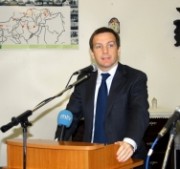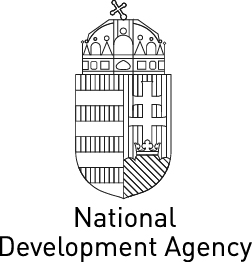Open Air Museum Heritage Programme 9 April 2008
 Minister of Local Government and Regional Development Mr Gordon Bajnai and Minister of Education Mr István Hiller officially countersigned the Open Air Museum Heritage Programme contract signed by the Director of the Szentendre Open Air Museum of Ethnography Mr Miklós Cseri and the Director of the Regional Development Agency Dr Tamás Lukovich paving the way for the major development.
Minister of Local Government and Regional Development Mr Gordon Bajnai and Minister of Education Mr István Hiller officially countersigned the Open Air Museum Heritage Programme contract signed by the Director of the Szentendre Open Air Museum of Ethnography Mr Miklós Cseri and the Director of the Regional Development Agency Dr Tamás Lukovich paving the way for the major development.
The museum presenting folk architecture and lifestyle in Hungary has been granted – as a priority project – 2 billion 222 million HUF EU funding and national co-financing within the framework of the New Hungary Development Plan. The National Development Agency, the Ministry of Education and Culture and the Central Hungarian Regional Development Council unanimously supported the Open Air Museum application.
The Open Air Museum of Ethnography, better known as the Skanzen, is a key attraction of the Central Hungary region and the Danube Bend and is exceptionally significant in terms of tourism, culture, as well as education. The Museum attracts many visitors year after year and presents Hungary’s folk life and traditions of the past two centuries to a wide audience. It represents a unique value, the maintenance and development of which is our common national interest.
In light of the values and significance of the Szentendre Open Air Museum of Ethnography, the National Development Agency welcomed the Open Air Museum Heritage Programme application for development funding submitted by the museum. The National Development Agency, the Ministry of Education and Culture and the Central Hungarian Regional Development Council equally supported the application; the government included the programme among the priority projects of the New Hungary Development Plan in July 2007 and deemed it worthwhile to support.
The objective of the investments of the Open Air Museum Heritage Programme is to develop the „living” characteristic of the museum and create conditions and circumstances underpinning learning through experience. The Szentendre Open Air Museum is dedicated to presenting the binding forces of tradition and the knowledge that can be gained from this. Its special characteristic is that it endeavours to transmit information by actively integrating the audience, as well as by treating visitors as active participants.
The Open Air Museum Heritage Programme application consists of 4 investments, the combined total costs of which are equivalent to 2 billion 222 million HUF; implementation begins in April 2008 and ends on 31 March 2010. The European Union is funding 2 billion HUF worth of project costs, whilst the Hungarian state is ensuring co-financing of 222 million HUF in value. The construction of the Northern Hungarian Village will take place within the framework of the first investment and will be set up next to the villages currently presenting 7 various traditional regions of the country; this village will present the traditional folk architecture and lifestyle of the north-eastern Palóc or Palots region lying between the Ipoly and Hernád rivers. The open air museum will later be given a new entrance building, which will be a reconstruction of the Mezőhegyes railway station based on original plans. Bag storage and nappy changing facilities will be ensured in the visitor’s centre to satisfy modern needs, in addition to providing modern services for the reception of visitors.
A 2.4-kilometer authentic Skanzen Railway will be built with five stations within the framework of the third priority investment. The historic electric train running along the line that was licensed in 1916 and constructed in 1930 primarily provides a convenient way for persons with disabilities, old people and children with small children to visit the museum. An Open Air Museology Workshop will be built as the forth component of the development, which will be used to present background work, function as a public workshop, interactive storage unit of scenes and a showroom, as well as a venue for holding educational workshops.

